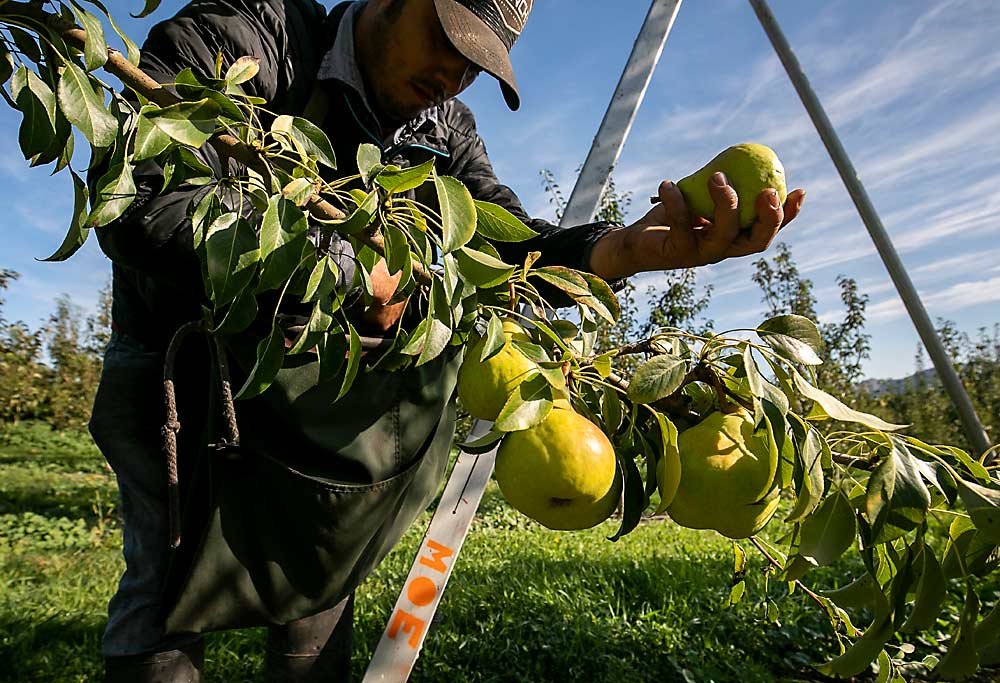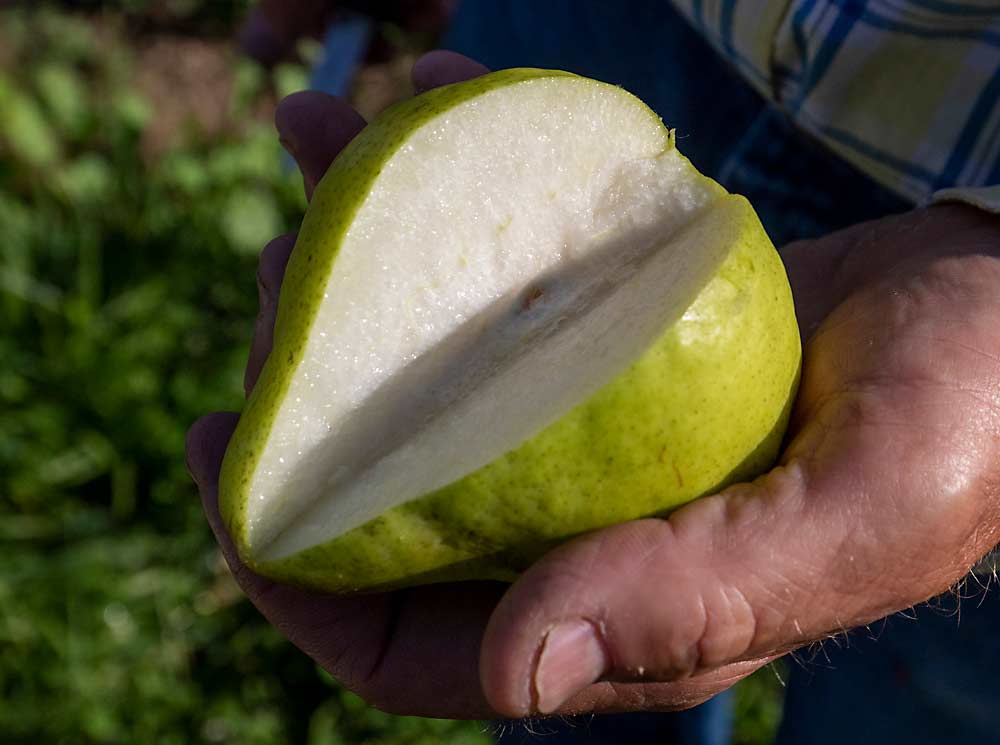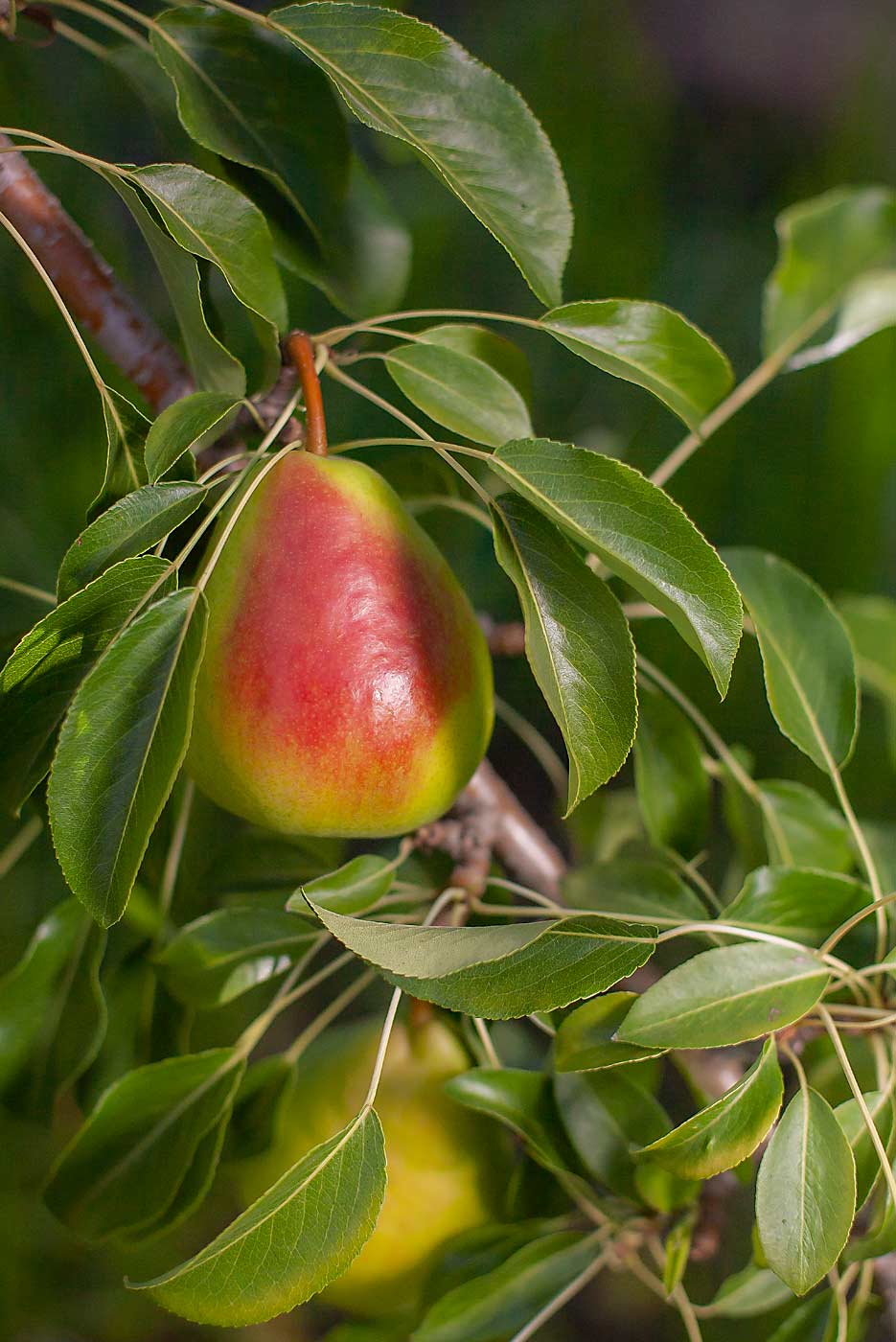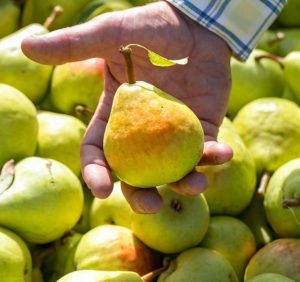
This year, Diamond Fruit Growers of Hood River, Oregon, expects to pack 630 bins of Gem, a blush pear billed as good to eat crispy right off the tree or soft after several days of extended ripening. That’s enough for the company and its marketers to explore aggressive campaigns.
“We’ll add more marketing dollars for it now that we have enough volume,” said David Garcia, general manager of the cooperative.
Developed by longtime U.S. Department of Agriculture pear breeder Richard Bell and released in 2015, Gem is an open-access cross between Sheldon and a numbered descendant that shares lineage with Comice, Bartlett and Seckel, among others. It’s also known for storing as well as an Anjou. Other packing companies in the Northwest have blocks of Gem, too — though Garcia was unsure whether any of them have yet reached commercial volumes.

Diamond Fruit harvested its first commercial crop of Gems in 2019, when growers delivered only 50–100 bins, just enough to introduce the cultivar to store produce managers, Garcia said.
Last year, the company packed about 400 bins, but the pandemic was tough on all produce, especially new varieties, as retail managers pulled back on their purchases and stuck with tried-and-true products. Critical marketing avenues for new items, such as in-store sampling, vanished. One retailer had planned to put Gems on the shelf but backed out at the last minute, Garcia said.
So, this year will be a true test of whether consumers will embrace a new variety of pear and whether they prefer it crispy or soft, Garcia said.
Diamond Fruit’s marketers still believe in the variety, said Dan Davis, director of business development for Oneonta Starr Ranch Growers, Diamond Fruit’s marketing partner. The company plans to use fixed-weight packaging, such as bags, as billboards to tell Gem’s now-or-later story.

“Consumer education is going to be key in such a flexible piece of fruit,” Davis said.
Meanwhile, Diamond Fruit plans to stretch the market by putting Gem in controlled-atmosphere storage and then release it December through March, after Bartletts have had their turn on store shelves.
The previous two years have given growers some better horticultural information, such as optimal harvest timing and pressure, Garcia said, though he declined to elaborate.
The Gem can be planted in tight spacing and comes into production within four or five years, said Scott Halliday, a Hood River-area grower for Diamond Fruit.
“You just can’t do that with an Anjou,” Halliday said.
The only drawback is that Gem requires thinning, which Anjou does not, he said.
In 2019, his 7-acre block was hit by hail and didn’t yield any fruit. Last year, he harvested about 15 bins, while prices were “OK.” This year, he expects 50–70 bins of Gem.
“This year is going to be a real telling year for us,” Halliday said.
—by Ross Courtney







Leave A Comment